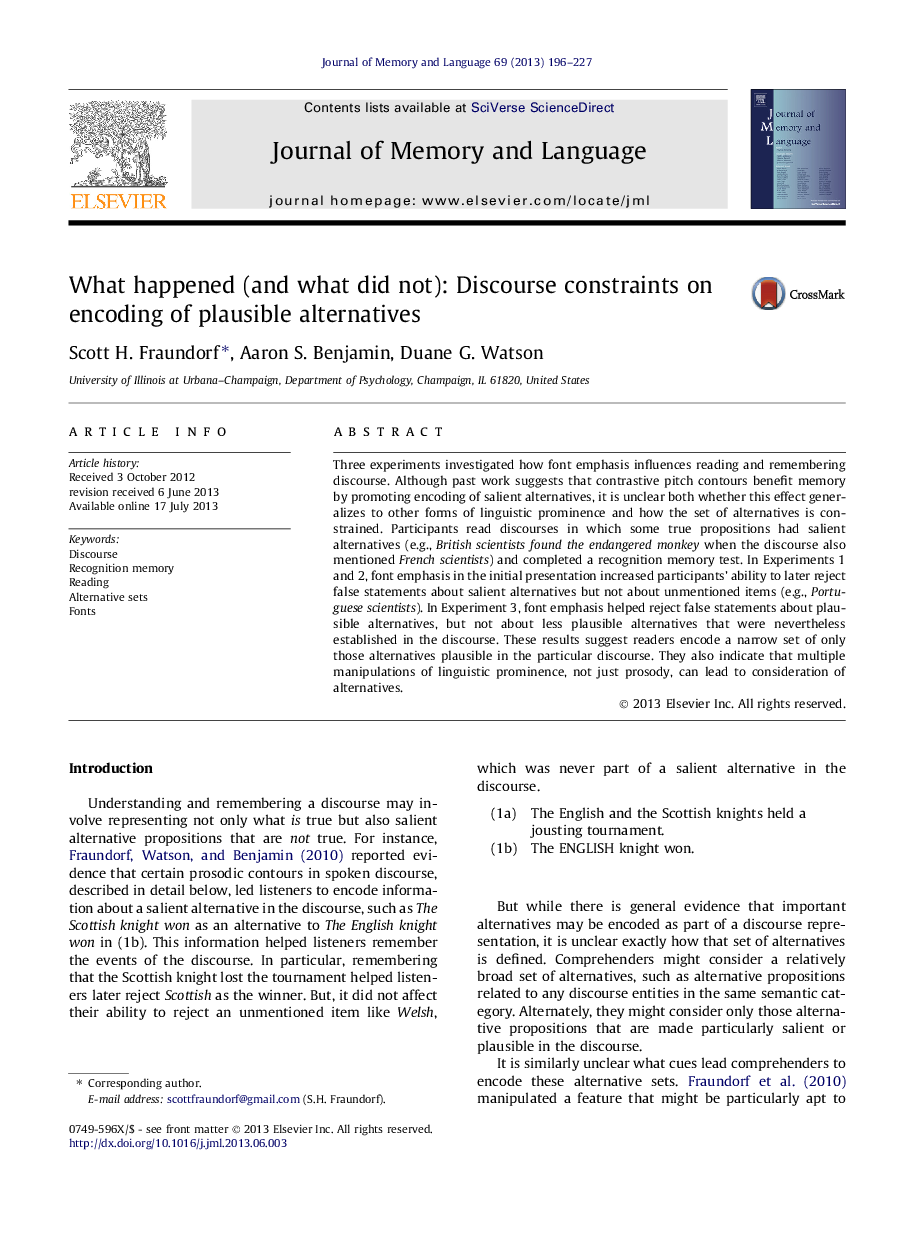| کد مقاله | کد نشریه | سال انتشار | مقاله انگلیسی | نسخه تمام متن |
|---|---|---|---|---|
| 931894 | 923046 | 2013 | 32 صفحه PDF | دانلود رایگان |

• Font emphasis in a discourse influences subsequent recognition memory.
• Helps reject important discourse alternatives but not unmentioned items.
• Results suggest emphasis leads readers to encode specific important alternatives.
• Effects from contrastive prosody generalize to emphasis in written text.
• Discourse plausibility constrains the set of alternatives encoded.
Three experiments investigated how font emphasis influences reading and remembering discourse. Although past work suggests that contrastive pitch contours benefit memory by promoting encoding of salient alternatives, it is unclear both whether this effect generalizes to other forms of linguistic prominence and how the set of alternatives is constrained. Participants read discourses in which some true propositions had salient alternatives (e.g., British scientists found the endangered monkey when the discourse also mentioned French scientists) and completed a recognition memory test. In Experiments 1 and 2, font emphasis in the initial presentation increased participants’ ability to later reject false statements about salient alternatives but not about unmentioned items (e.g., Portuguese scientists). In Experiment 3, font emphasis helped reject false statements about plausible alternatives, but not about less plausible alternatives that were nevertheless established in the discourse. These results suggest readers encode a narrow set of only those alternatives plausible in the particular discourse. They also indicate that multiple manipulations of linguistic prominence, not just prosody, can lead to consideration of alternatives.
Journal: Journal of Memory and Language - Volume 69, Issue 3, October 2013, Pages 196–227